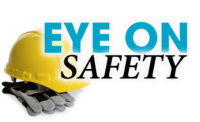“Hot work” probably is a topic you may not have thought much about. But if implemented right, it could reduce your company’s insurance costs, prevent loss of valuable property, inventory or life, and could prevent an otherwise preventable fire from starting.
According to OSHA, hot work is any work that involves burning, welding, using fire- or spark-producing tools or that produces a source of ignition. Workers performing hot work such as welding, cutting, brazing, soldering and grinding are exposed to the risk of fires from ignition of flammable or combustible materials in the space and from leaks of flammable gas into the space from hot-work equipment.
At First Supply, we implemented a hot-work program on the advice of FM Global, which is at the forefront of commercial and industrial property insurance and loss prevention. Below is a series of steps FM Global recommended we take. Contact your property insurance provider to seek similar input.
Certificate of insurance: Get the hot-work contractor’s COI before he or she arrives. No contractor may conduct work on company property without providing a COI.
Work hours: All hot work must stop at a time that allows the fire watcher to monitor the area for four hours after the completion of the work. For example, if the fire watcher’s facility closes at 5:00 p.m., then the hot work must either stop at 1:00 p.m., or arrangements to stay open later must be agreed upon by management. A hot-work permit expires after eight hours. The fire-safety supervisor must issue a second permit if work will take longer than eight hours.
Permit materials: FM Global provides First Supply with the permits needed and your carrier may as well. The yellow permit form and these instructions will guide you through the process from beginning to end.
Install a wall hanger in a permanent location. The wall hanger must be easily visible to employees. In Part 1 of the yellow permit, fill out and place in the wall hanger pocket. With Part 2 of the yellow permit, fill out and hang at the hot-work location.
Fire-safety supervisor duties
1. Determine if there is a safer way to do the job (e.g., glue) while maintaining effectiveness and craftsmanship. If not, can the contractor do the hot work offsite at their workshop? Hot work on company property should be avoided whenever possible.
2. If hot work must be done on company property, review the permit process with the contractor and the company’s fire watcher. If the precautions can be met, issue the hot-work permit. Note! Do not complete the signoffs on Page 2 until the hot work and monitoring are finished.
3. Post Part 1 in the wall hanger and Part 2 near the hot-work area.
4. Notify employees hot work is being conducted in the area. Instruct them to avoid the area and not move materials, furniture, tools, etc.
5. Oversee the contractor and the fire watcher. Conduct a post-work inspection, complete the fire supervisor signoff and have the fire watcher sign off on Part 2.
6. Save Parts 1 and 2 in the facility safety file for one year.
Fire-watcher duties
The assigned employee and the fill-in employees must understand the hazards of hot work and be properly trained in the use of fire extinguishers and fire-alarm activation, and be familiar with the locations of both.
1. Assist fire-safety supervisor with the precaution checklist.
2. Close all fire doors.
3. Stay near the contractor until the job is complete. Ensure the work area remains free of combustibles and that the hot-work area is not disturbed.
4. Stop hot work if unsafe conditions develop.
5. Find an employee to fill in during your breaks.
6. Stay in the hot-work area 60 minutes after the work is complete to watch for fire.
7. Inspect the hot-work site and surrounding area every 60 minutes for the next three hours. Look for smoke, embers, flames, etc. Pay close attention if hot work was done on the roof, on the walls or in buildings with multiple levels.
8. Sound the alarm and if it is safe to do so, douse the fire with a fire extinguisher.
9. Complete the fire-watcher signoff of Part 2 of the yellow permit in front of the fire safety supervisor.
Workplace fires can be very costly. In fact, the average loss caused by a fire is $1.7 million and millions more in premium increases. Studies show 59% of fires are attributed to outside contractors. The tendency is to relax procedures for contractors because of their expertise in this area. However, the risk of fire increases because contractors don’t understand the hazards at your facility.
All it takes is one spark to land on or near a combustible material – such as insulation, wood or cardboard – which is enough to ignite a fire. Sparks can settle in areas you can’t see, such as high ledges, floor openings, vents, recessed walls or ceiling openings. They can smolder unnoticed for hours before igniting a blaze.
Protect yourself, your facility and your team by learning the proper procedures when engaging in hot-work activities and by taking the proper precautions every time. This is not the time or place to take shortcuts.







